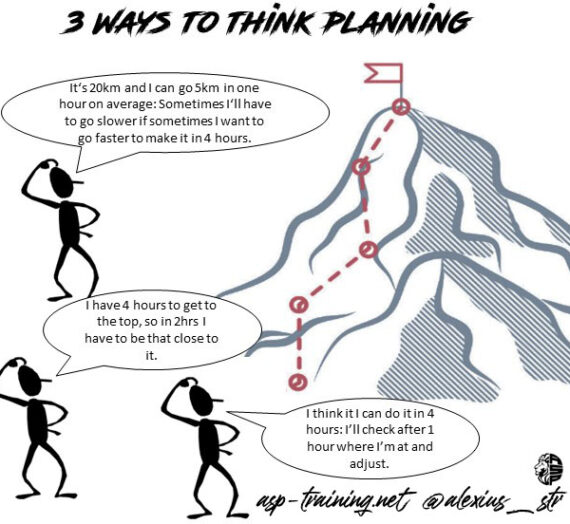A while back I stumbled across a quote that stuck in my head since then, even if I don’t remember the exact words: It said something like: “Just because something is simple, doesn’t mean that it’s easy”, and made me think about the importance of that quote for my own practice. It already states that “easy” and “simple” do not mean the same thing, even if in spoken language they might be used as an equal:
The term “easy” (opposite: “hard”) deals with the difficulty of a task/problem, which is, to some extent, a measure of the effort needed to solve a problem or accomplish the task: It is relatively easy to run 100m under 30s: It neither need a big effort nor a huge amount of training to accomplish that task. On the other hand, it is hard to run the same 100m under 10s; a task that so far has been accomplished by less than 150 humans who have put in years of training and effort.
When we talk about “simple” (opposite: complex) we refer to the complexity of a task or a problem: This involves, among others, factors like the amount of knowledge, the thinking processes and action sequences needed to complete a task: Running in a straight line is relatively simple while dribble past an opponent in a basketball game is complex: It involves analyzing the situation, choosing a side or maybe a dodge, watch your opponent’s reaction and react on the situation again et cetera et cetera.
Every task has can be classified on both the scales; complexity and difficulty. What is easy or hard and simple or complex, is individual to a person at a certain moment. That also means that the same task that once was hard can be easy when circumstances change over time, or in case of training, adaptations take place: The process of training has the goal to reposition our self/the athletes in the spectra: We want to make easy what once was hard or even impossible, and to make complex tasks simpler (i.e. learning) for us, so we can use more of our resources for other tasks. To make an impressive example: When a child learns to walk it is a very complex skill and needs all the child’s attention, later in life walking “just happens”.
Determined by your role (e.g. whether you are a strength or a skill coach) and on the athletes abilities (beginner vs. advanced) you have to ask yourself what stress you want to impose: The answer is always “It depends…” but most of the times when the goal is increasing strenght and physicallity this means:
Make the programs simple for the athletes: The athlete should be able to get the results without having to understand the underlying theory of a training program. Putting together a good training program is a complex process: It involves knowledge, planning among others, not to speak of the many variables, like e.g. available equipment, limiting your choices as coach. That is why athletes have coaches in the first place, so that they don’t have to think about how and why to implement certain methods. If a program is too complex to understand, the athlete’s attention is taken away from the physical effort and (s)he loses resources. Ath the same time it doesn’t mean that a simple program can not have complex elements.
Make the programs “hard” for the athletes: To yield to improvements, physical training has to challenge the body and impose a stress to make adaptation happen. Making a program or a session “hard” doesn’t mean to wear the athlete down but to demand adequate physical effort of him to slightly overload the system. Remember that every athlete is at a different stage of his own “evolution” that’s why individualization is important. Working hard and with dedication is what all successful programs have in common
Do you agree?
Alex


